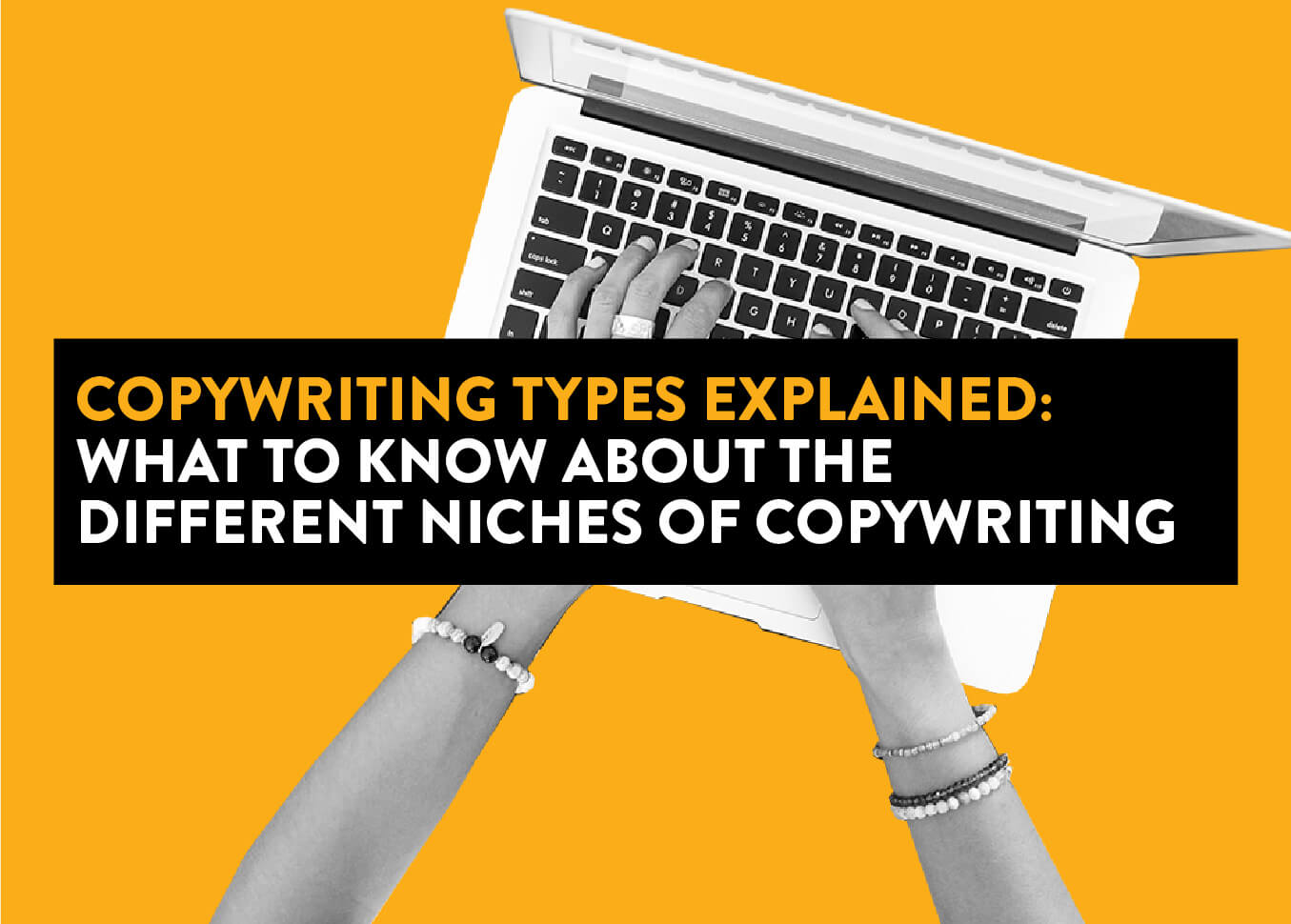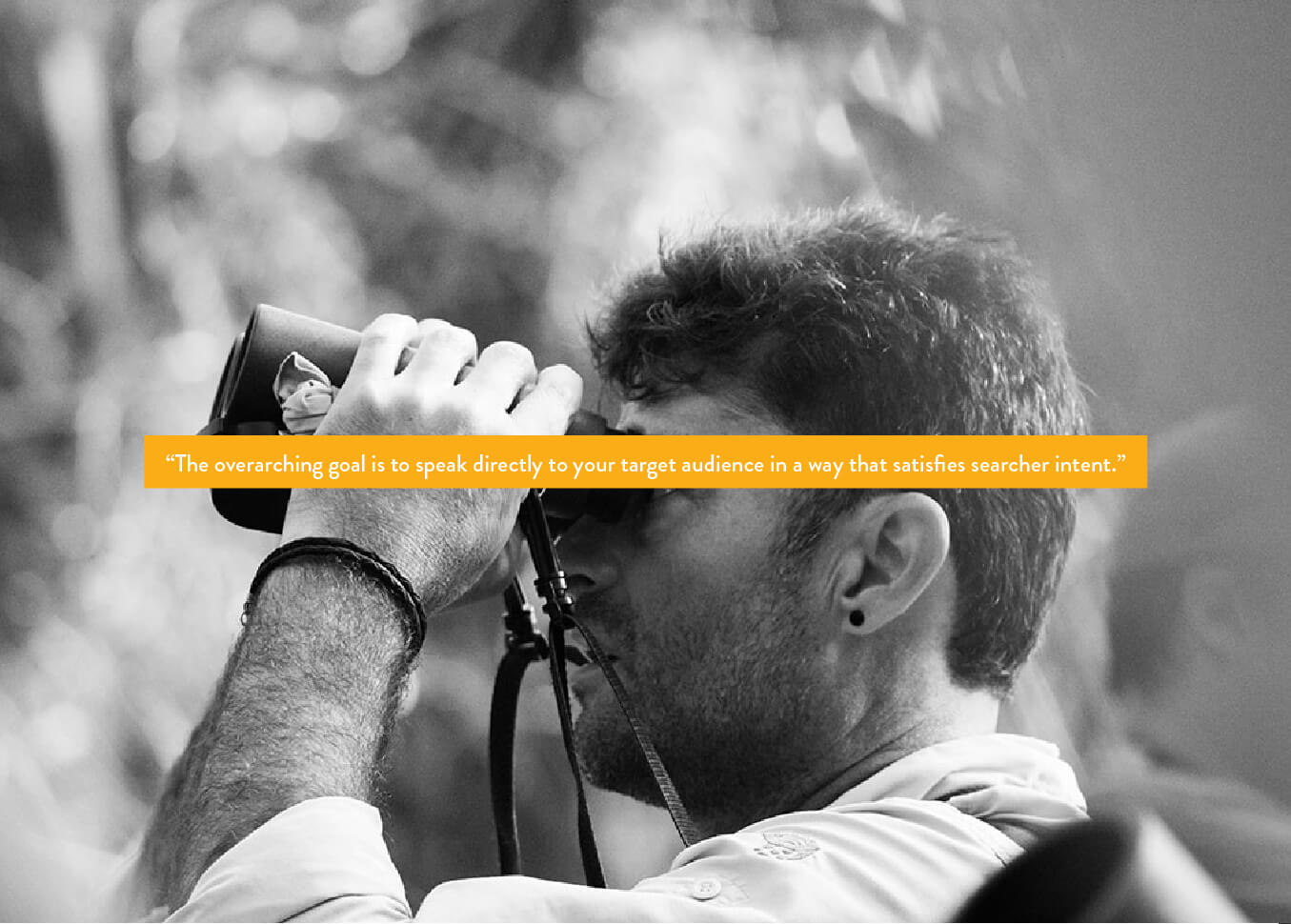
Copywriting refers to the process of creating written content for promotional purposes. While copywriting can include the oft-thought-of traditional advertisement copy, it extends to any area where words are being used to persuade an audience. This can be obvious or subtle depending on which stage of the marketing funnel writers are targeting.
Understanding copywriting throughout all its iterations will give you a leg up when crafting your next piece of content. For example, a business that focuses solely on paid ad copy won’t benefit from really honing in their email marketing headlines, social media captions, or website copy.
Learning the various applications of copywriting can help you apply your skills in a strategic way for the best possible marketing results.
Ad Copywriting

Ad copywriting includes all of the written elements in a paid advertisement. There are many different types of ads, including:
- Billboard
- Direct mail
- Display
- Guerilla
- Influencer
- Mobile app
- Native
- Pay-per-click
- Podcast
- Product placement
- Public service announcements
- Radio
- Social media
- Television
- Word-of-mouth.
Advertisement copywriting covers many aspects of traditional and digital marketing, and will continue to expand as new ways emerge to reach audiences through tech. As trends shift, so does ad copy, including the way it’s written and where it appears.
B2B Copywriting

Business-to-business (B2B) copywriting is the written content from one business entity targeting another. B2B copywriting is a business’s attempt to bring awareness of its product or service to other businesses.
The key difference that separates B2B copywriting is the audience. While many copywriters target public consumers, B2B copywriters strive to create persuasive and action-inspiring copy for other businesses.
The B2B copywriting landscape includes business-specific sites and tactics. For example, a customer relationship management software brand must tailor their copy to match the needs and pain points of its audience of retailers, rather than the customers of those retailers.
B2C Copywriting
Business-to-consumer (B2C) copywriting targets the direct public with the goal of gaining customers. B2C copywriting is what most people think of when they think of advertisement copy. The words in ads are crafted to speak directly to potential consumers.
This type of content overlaps with several other copywriting areas. A B2C copywriter can write website copy, billboard copy, or even social media posts that seek to engage consumers using empathy, humor, fear, or any other combination of marketing tactics.
Brand Copywriting

Brand copywriting is focused on creating a particular brand image. This type of writing often blends creativity, storytelling, and persuasive methods to inspire the audience to perceive the brand in a specific way.
The entire goal of brand copywriting is to foster a specific image of the brand. This requires consistency when crafting copy across all platforms. For example, a brand copywriter for a nonprofit may come up with a mission statement for the website, social media bios, and grant applications.
Content Marketing

Content marketing exists to establish trust, garner awareness, and engage with audiences. Content marketing is an amalgamation of several elements, including copywriting, for any piece of content that is used by a brand to increase awareness and engagement.
For example, content marketing copy can include:
- Blog posts
- Infographic statistics
- Short-form video scripts.
Content copy extends to almost every aspect of marketing. Blog posts, for instance, include copywriting in the form of article creation, but also includes search engine optimization (SEO) elements. Content marketing for SEO uses writing to drive search rankings and results, which helps drive organic traffic, emphasizing the use of copywriting beyond paid ads.
Creative Copywriting
Though copywriting techniques can be formal and promotional, there are many occasions where copywriters need to be creative.
For example, a nonprofit organization can use creative storytelling in its marketing efforts to engage an audience and, ultimately, garner support and donations. This storytelling could be a blog post or even a video detailing how the nonprofit impacted someone’s life, such as helping rebuild their home after a natural disaster. This type of copywriting evokes emotion in the audience members, prompting them to build a closer association with the brand and, hopefully, take action.
Direct-Response Copywriting
Direct-response copywriting is focused 100% on driving an action. Calls-to-action (CTAs) are a perfect example of this kind of copywriting.
A copywriter may end a blog post or social media caption with a CTA like, “Sign up now!” or “Click here to purchase.” These are ways to get the reader to take action immediately after reading your content.
Email Copywriting

Email marketing is a popular and effective tactic many marketers use in businesses large, small, and in-between. Email marketing is still used prolifically: there are over 4 billion people that use email every day, and it’s a fantastic way to reach audience members on digital devices.
Email copywriters create the contents of the email, as well as headlines to encourage readers to open the message in the first place. The goal is to get readers to potentially act on the contents of an email, which means these copywriters need to intrigue and engage readers while still supporting the marketing goals of their brand or organization.
Product Copywriting
Product copywriting shows up in product names and descriptions. This includes the written elements that describe each product’s unique selling points (USPs), features, pricing, and more. Product copywriters may also write promotional material for events where products are being sold.
Public Relations Copywriting
Public perception of a brand can make or break its reputation, which makes public relations (PR) copywriting crucial to many organizations.
These copywriters work closely with PR professionals to develop content that effectively communicates key messages, enhances brand reputation, and manages public perception. This content can include:
- Press releases
- Media pitches
- Speeches
- Social media statements
- Crisis communications.
There are many situations in which maintaining public perception calls for positive or reputation-saving PR.
Public relations copywriting aims to build strong relationships with the target audience, stakeholders, and the media by delivering accurate, compelling, and timely information. It requires a deep understanding of the brand's values, objectives, and target audience, as well as the ability to adapt messaging to different channels and platforms.
SEO Copywriting

SEO copywriting is the creation of written content specifically for search engine results pages (SERPs). There are certain parameters that search engines like Google use to determine SERP rankings, and SEO copywriters create content optimized for these parameters.
Some of these techniques include writing SEO-specific:
- Title tags
- Meta descriptions
- Keyword-targeted content
- Headings
- URL slugs.
The overarching goal is to speak directly to your target audience in a way that satisfies searcher intent, while also allowing search crawlers and algorithms to understand the topic and value of the content. If crafted strategically, SEO copywriting can help brands show up in relevant search results and gain organic traffic.
Social Media Copywriting
Social media copywriting includes all written content shared on social platforms, such as:
- Bios
- Post captions
- Video transcripts
- Comments
- Direct messages
- Graphics with written elements.
Social media copywriters need a solid understanding of social trends, hashtags, and content that’s current and shareable.
Technical Copywriting
Technical copywriting is targeted to an audience that needs more complex, detailed information on a niche subject. Technical copywriters pack this information into an organized format. Some examples:
- Product manuals and documentation
- Consultation call scripts
- Product demos
- Technical product guides
- Product specifications.
Often, technical copywriters are tasked with condensing information into easily-digestible content.
Technical copywriting exists to solve some sort of pain point for the reader by providing answers to complex questions.
Thought Leadership Copywriting

Often used in B2B settings, thought leadership copywriting is content that takes a unique position or innovates a new idea within a given industry.
Thought leadership can either be created directly from the expert themselves or from a team designated to help represent an industry expert. As long as the content is innovative and thought-provoking, it’s considered thought leadership copywriting.
Thought leadership is beneficial to draw an audience into longer, more engaged conversations, and grow the authority of the expert and brand behind them. This can work well on blog posts that allow comments and shares or social media posts that encourage discussion.
The best thought leadership copy often takes a firm stance or controversial position. Copywriters in this arena should keep their ears to the ground and come up with novel ideas to explore in their content.
UX Copywriting
User experience (UX) copywriting strives to create content that dictates how your audience will use and interact with your product, website, or software.
UX is crucial to supplying positive brand associations, as users quickly become frustrated if they run into issues in navigating your product or site. Enough issues, and they’re likely to foster negative brand association.
UX is even important for SEO because it lowers bounce rate. Poor UX can impact your search visibility, including:
- Slow page speed
- Poor formatting that is difficult to read, watch, or use
- Unexpected downloads
- Broken functionality on a page or site
- Misleading titles
- Deceptive design
UX copywriting includes all written elements of a piece of content, site, or product that contribute to how users interact with and experience it.
Website Copywriting
Website copywriting specifically focuses on written content on a website, such as:
- Headers
- Navigation menus
- Product descriptions
- Blog posts
- Whitepapers
- Contact information
- Contact forms
- CTAs.
Though many of these niches overlap, each has a unique and significant place in the copywriting sphere. Being aware of each copywriting type will help you craft written content that appeals to readers in all scenarios, boosting brand trust and user engagement.

